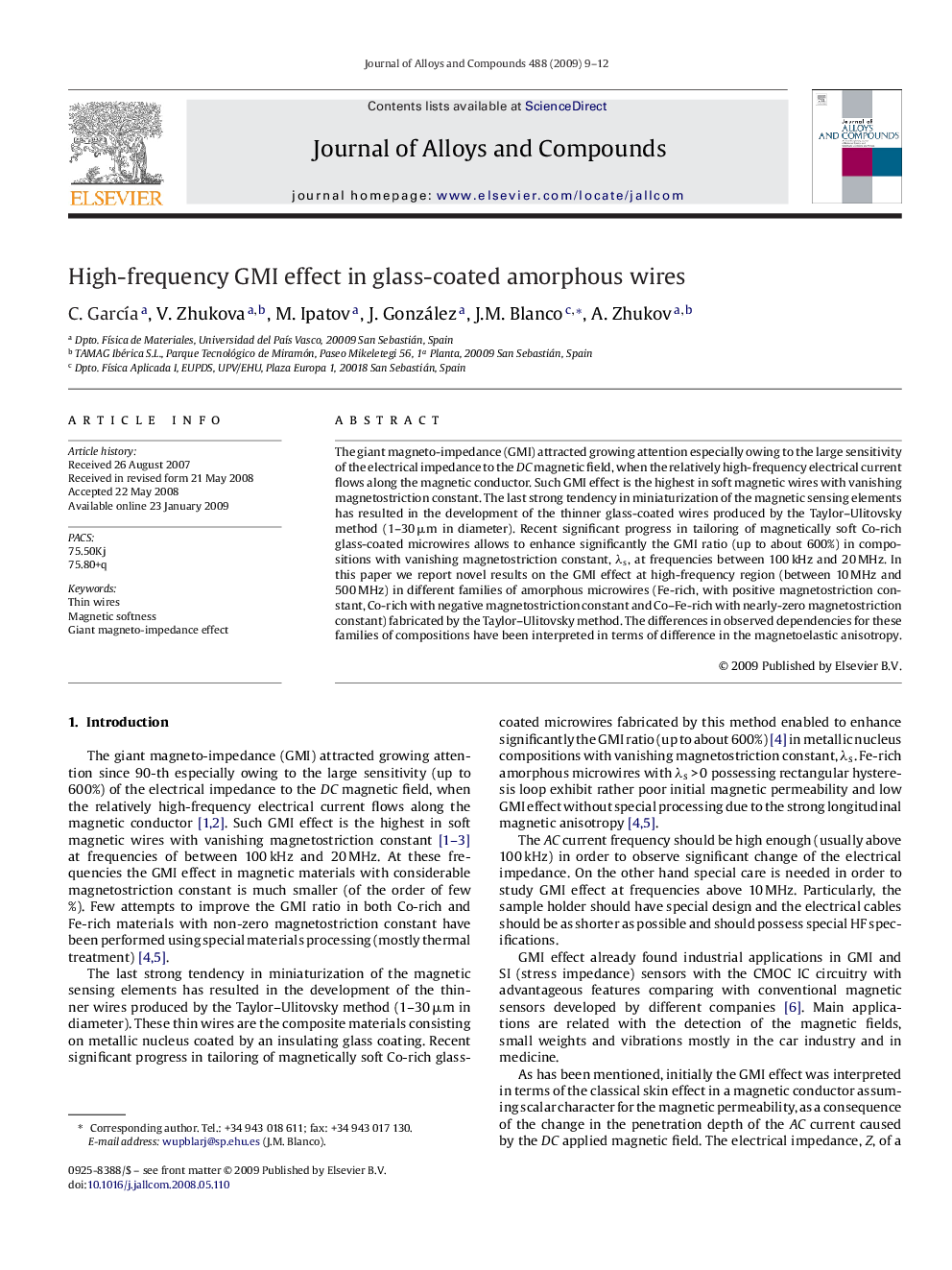| کد مقاله | کد نشریه | سال انتشار | مقاله انگلیسی | نسخه تمام متن |
|---|---|---|---|---|
| 1621370 | 1005747 | 2009 | 4 صفحه PDF | دانلود رایگان |

The giant magneto-impedance (GMI) attracted growing attention especially owing to the large sensitivity of the electrical impedance to the DC magnetic field, when the relatively high-frequency electrical current flows along the magnetic conductor. Such GMI effect is the highest in soft magnetic wires with vanishing magnetostriction constant. The last strong tendency in miniaturization of the magnetic sensing elements has resulted in the development of the thinner glass-coated wires produced by the Taylor–Ulitovsky method (1–30 μm in diameter). Recent significant progress in tailoring of magnetically soft Co-rich glass-coated microwires allows to enhance significantly the GMI ratio (up to about 600%) in compositions with vanishing magnetostriction constant, λs, at frequencies between 100 kHz and 20 MHz. In this paper we report novel results on the GMI effect at high-frequency region (between 10 MHz and 500 MHz) in different families of amorphous microwires (Fe-rich, with positive magnetostriction constant, Co-rich with negative magnetostriction constant and Co–Fe-rich with nearly-zero magnetostriction constant) fabricated by the Taylor–Ulitovsky method. The differences in observed dependencies for these families of compositions have been interpreted in terms of difference in the magnetoelastic anisotropy.
Journal: Journal of Alloys and Compounds - Volume 488, Issue 1, 20 November 2009, Pages 9–12